Skulls Unlimited cleans over 50,000 skulls a year.
Learn More!

Museum of Osteology open in southeast Oklahoma City
Museum of Osteology open in southeast Oklahoma City
Nov 15, 2010
MATT DINGER , The Oklahoman
Jay Villemarette has a few skeletons in his closet. But, he's also got skeletons in vats of solution, in beetle-filled aquariums, and drying on racks.
Jay Villemarette has a few skeletons in his closet. But, he's also got skeletons in vats of solution, in beetle-filled aquariums, and drying on racks.
His Museum of Osteology opened Oct. 1 in Oklahoma City. Osteology involves the study of bones.
Seven years in the making, the museum is the first of its kind in the country, he said. About 1,400 people already have visited, including more than 200 during a Halloween event.
The museum has about 300 skulls and skeletons on exhibition, and expansion is under way. “We'll have another couple hundred by the time we're finished,” Villemarette said.
In addition to various species of birds, reptiles, and other mammals, the museum also boasts a collection of human skeletons and skulls, including one that's been pierced by a bullet hole.
Villemarette says India and China used to export their dead, but these days, his human specimens come from people who donated to science.
Villemarette sells bones and skeletons — including human ones — through Skulls Unlimited International, the for-profit side of the museum. But human remains are available only to doctors and medical students.
“I'm not going to go against somebody's wishes. Money's not that important. It's just not,” Villemarette said.
If it was, then Villemarette wouldn't have sunk an estimated $1 million or more building the museum and its exhibits. At $5 per person, he doesn't expect to recoup his expenses in his lifetime. Additionally, the museum is nonprofit.
A large number of his specimens come from zoological parks across the nation, Villemarette said.
“Being in business 25 years, we've gotten the respect of the scientific community. It's a sad day when an animal dies,” he said. “It's an even sadder day when it goes into an incinerator or a hole in the ground.”
Museum educational director Joey Williams agrees. “Everything living dies eventually, so if we can utilize the animal after its death, we will. We try to be as ethical as possible,” Williams said.
Villemarette said he is especially proud of the humpback whale hanging from the museum's ceiling. The mammal was hauled from the eastern seaboard and cost about $25,000 from transportation to display.
Cleaning the humpback whale's bones took about two years, and then they had to reassemble the 40-foot skeleton. “We worked 28 days over a two-month period,” said Williams, who has a degree in biology education and has shifted from Skulls Unlimited to the museum full-time. He said he hopes to extend the museum's outreach program in the future.
“We don't deal in extinct species. Kids can go to the zoo and see the living animal and come here and see what's on the inside,” Williams said. “We've got a handful of animals that most museums don't have.
“Unfortunately, we have species in here that will be extinct in our lifetime.”
One such animal is the Javan rhinoceros. Villemarette came across the skull of the animal, reportedly killed in 1880, in a Paris antique shop. There are an estimated 30 to 50 living Javan rhinos left in the world.
Villemarette said one species at the top of the museum's wish list is “a giant panda.”
Read more: http://newsok.com/museum-of-osteology-open-in-southeast-oklahoma-city/article/3514718#ixzz15OtlxE4D

Leave a comment